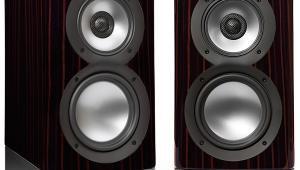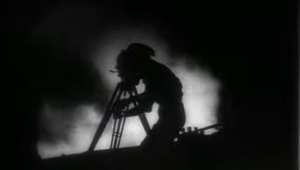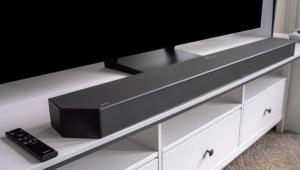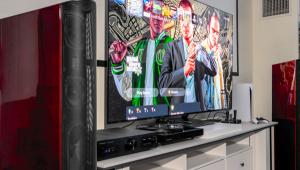You're absolutely right. However, even without renovations, you need to keep your home clean. However, you don't always have time for that. However, in such a situation, you can turn to a cleaning service. I was told about house cleaning Lynnwood. They say that they can help you with quality cleaning. If you want, you can check this information.
OSD NERO AB5 Active Studio Monitor Review
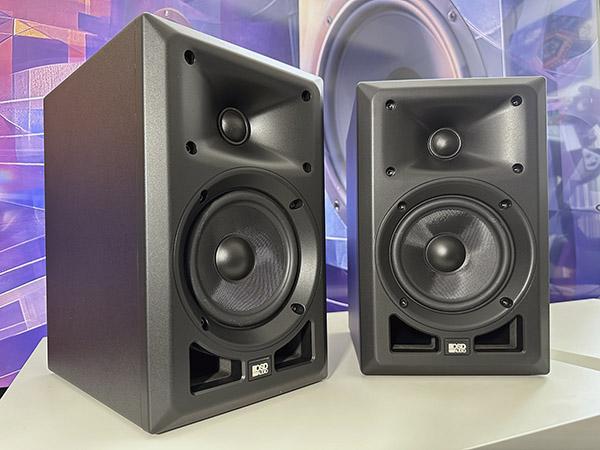
AT A GLANCE
Plus
Best speaker of any size, shape or configuration I've heard for the money
Small, easy to place
Minus
Needs wall power and a signal wire feed
THE VERDICT
My ears and wallet give the OSD two big thumbs up.
Have you ever wondered why something good usually costs so much? Of course, we all have.
Outdoor Speaker Depot is a little-known—but celebrating a 20-year anniversary—Internet Direct site based out of Brea, CA, with quite a large array of goods to offer at prices that will make your jaw drop. The OSD Nero AB5 is a case in point, utilizing active crossovers, bi-amped Class D amplifiers, digital signal processing, and quality drivers that rise above those typically seen at this price point. That's just scratching the surface of what is to be found.
The Nero AB5 gives us a few inputs: 1/4", XLR, and RCA. Sadly, no Wi-Fi or streaming capability is available, but that would certainly drive up the cost. Also, subwoofer integration will have to be handled externally. A gain control allows quick matching of levels to the need, be it for the previously mentioned subwoofer system or for level-matching other inputs from a preamp/receiver or mixing board. High (±1 dB) and Low (±2 dB) frequency trim switches allow for boundary compensation.
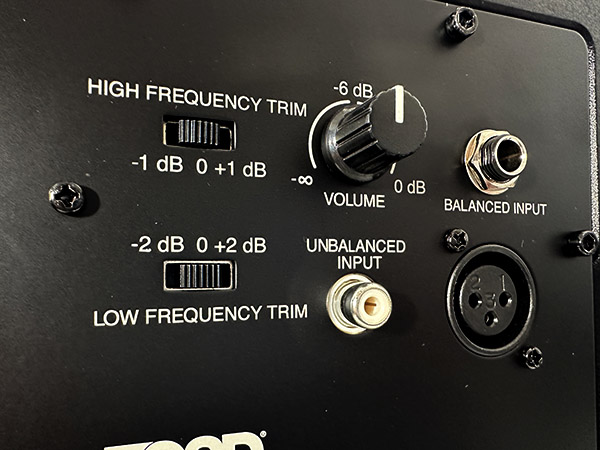
A composite 5.25" fiberglass woofer and 1" ferrofluid-cooled soft dome tweeter move the air. A shallow waveguide helps the tweeter by providing factory-specified 110-degree horizontal and 70-degree vertical pattern control and allowing the electronic crossover between the drivers to dip down a little lower than we typically see, at 2 kHz, with DSP bringing the phase into alignment. The waveguide also allows for a directivity match between the two drivers at the crossover point. A surprising feature is the 3M® EVA anti-vibration pads that keep the speaker cabinets from chattering on desktops and stands.
Front-mounted bass reflex ports help direct energy away from the front wall, enabling close placement to the wall, with the LF trim switch facilitating this as well. Magnetic grilles are included, but I did not use them. I could hear the cabinet talk when knuckle rap-testing, but the baffle with integrated waveguide rang dead. An intelligent, acceptable, and necessary concession to build price. Weighing in at under 10 lbs., the 7.28" x 11.8" x 9.57" Nero AB 5 fits neatly into the desktop monitor class.
Installation
HF and LF trims help integrate the Nero AB 5 into a free field or desktop situation. I tried the speakers in two environments, my living room multimedia system as L/R mains and a built-in alcove desk in the corner of the living room. The desk provided me the opportunity to experiment with the bass and treble gain switches, as we will soon see. I had to spend 19 bucks or so on a double 10-foot run of RCA cables.
It is easy to get a pair of AB5s up and running; all you need is a source with a level control and the aforementioned signal cables. I just used my AVR and benefited greatly by using Audyssey XT32 for subwoofer correction. Placing the AB5s on 28" stands, I checked the treble and bass "switches" on the back, ensuring they were at 0 dB and the level control was in the middle. Turned everything OFF (always do this when making/breaking connections), unplugged my reference speakers from the wall (they are ESLs), unplugged their stereo amp from the AVR, plugged the speakers into the newly-vacant power receptacles and into the AVR, fired everything back up, disabled previous Audyssey settings, and go!
I tried a few songs from The Essential Billy Squier compilation, as that was what I was in the mood for and the recordings are great for calling out treble harshness, as many of his albums have a signature peakiness in the treble. "The Stroke," "Here in the Dark," and "Everybody Wants You" maintained that high-frequency edge, but I wanted a little more output as I was running my AVR at the 0 dB reference level. With seemingly plenty of gas left in the AB5's tank, I decided to run the level control wide open.
"Emotions in Motion" showed me right away that my dual subwoofer system was in lock-step with the monitors, and the combo was immediately ready for an Audyssey massage. I did try a bit of HF attenuation first. Even though it is only supposed to be a 1 dB cut, the shelf EQ is wide enough to be quite audible and deemed, in this setup, to be undesirable to me. This option, along with the LF trim, is best used on a desktop and/or in systems that do not utilize correction software.
Acoustic measurement at the listening position confirmed my initial listening impressions, revealing a V-shaped nature, one that is flat from 55 Hz to 500 Hz, gradually descending down to 4 dB at 2 kHz, then gently rising again to level off at 4 kHz. There are a few 'brilliance' peaks at 6 and 8 kHz that give the speaker a 'lively' sound, even when activating the HF trim cut. Bass response was flat down to 55 Hz, where it started to roll off pretty steeply, as we should expect from a bass reflex cabinet.
The soundstage was nice and wide, with sharply focused central images. It soon became apparent that this is one of those speakers that encourages leaning on the volume control; I often found myself turning it up after having turned it down to focus my attention elsewhere while working. It is one of those speakers that will steal your attention! This $100/each job isn't messing around; it is completely serious. The upper mids/lower treble did tend to grate a bit when pushed to the limit at higher volume levels, reminding us that we are listening to a small monitor.
Turning the subwoofers off, I listened to a little Black Sabbath. They held a really good account of themselves. I kicked up the LF bass boost Trim on "Master of Reality (2014 Remaster)" and found it to be a bit clumsy. Turning it back to neutral made everything more 'real', "mastering" the universe that is my room.
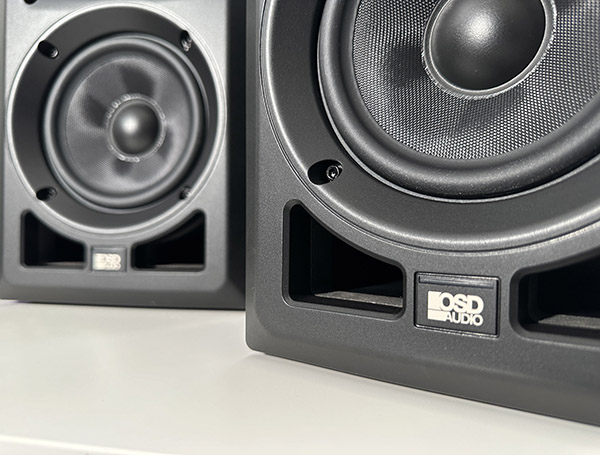
I have a few decades of sat/sub setup experience, and the Room EQ Wizard (REW) Room Calculator helped streamline the process greatly and can help one save weeks/months/years of physical experimentation. This dual subwoofer setup works well in my room for all of the speakers they have supported and welcomed the Nero AB5 pair into the system. I ended up using Audyssey for the subs only, with the crossover set at a lowish 60 Hz to fully wring out the OSDs. Also, it just sounded best this way.
Listening Impressions
From The Essential Kenny Loggins, "This Is It", I noticed that the highs got a bit brash when the OSD is pushed, a quality that I found across the board with all sources, but good ol' 80's pop recording tech accentuates, highlighting Loggins' "breathy" vocal qualities. The accompanying background vocals from the likes of Michael McDonald carried the same slightly-strident quality but the Nero AB5 presented it in a way that was not objectionable.
Henry Mancini's "The Pink Panther" (Original Motion Picture Soundtrack) kicks off with the famous saxophone sound anchored dead center, about the size of a basketball, with the accompanying instruments spread over various points on the soundstage, some as small as a tennis ball, the bass filling out the entire space. Pinpoint instrument/vocal location should be apparent when listening to well-recorded tracks, and the AB5 did not disappoint.
Black Sabbath Vol. 4 "Supernaut" (2014 Remaster) is another imaging case in point, with Bill Ward's hi-hat starting off the song, panned ridiculously hard left as we often find in recorded music. As the track progresses to the 12-second mark, Ward starts using the rest of his kit, and we find that he is now sitting in the center, toward the back, rather than front left. As a multi-instrumentalist myself, drums included, I'll never understand why studio engineers do that. The Nero AB5's exceptional imaging properties drew this acoustic cartoon as it was intended.
Jefferson Starship's "We Built This City." I absolutely hate this song, with a capital H. I have not heard it in a while, quite on purpose. This is the first time ever that I did not shut it off, listening through the entire track instead. I must admit, it sounded pretty good, even though the song itself is quite awful, to me. The wistful and pitifully short 5-second guitar solo at 2:32 captured my waning attention and dragged me back "knee-deep in the hoopla," the song eventually concluding with a background vocal anchored firmly on the right, where it should be. I consider The Nero AB5's ability to get me through that song a success!
Korn's "Make Me Bad" puts a spotlight on what some call "inner detail"; I call it a clean production noise floor, an attribute that the AB5 calls out when being tasked to reproduce, as it should. Depth and width were reproduced in a satisfactory fashion. Conversely, the next track, "Thoughtless," from the Untouchables album was thoughtless in its ability to project much more than a 4-foot-wide stage of nearly monophonic Loudness War mess. The Nero AB5 made it easy to hear the difference between them.
Delving a bit into Tidal video content, The Alan Parsons Project's "Games People Play" (Official HD Video) kicked booty on the dynamics, which surprised me considering the presentation seemed like an over-blown three-foot-wide mono recording trying to sound four-foot-wide. Nonetheless, the speaker did its best, allowing me to enjoy audio and video that is far from HD. Good speakers do not make lesser recordings sound worse; quite the opposite.
Madonna's Celebration compilation "Vogue" starts out with a serious synth mood that fills most of the space between the speakers, with most of the sound panned slightly left. Percussion and faux-finger snaps join in, images panned outside of the speakers and giving a wonderful sense of soundstage width. To carry on with that sense of width, Madonna comes in to "Strike a Pose." to the outside of the right speaker, then on the left. The drums bring attention to the center stage while Madonna continues to bounce to and fro, left to right before being brought to the fore, now anchored front and center, the accompanying bass lines captivating me enough to start involuntarily rocking my head.
The ability of the OSD Nero AB5 to project a large presentation that belies their size becomes apparent with well-produced tracks such as this, fully capable of conveying the absurdity of this software-generated odyssey.
Settling in to watch a movie, Joe Kidd, I was not at all shocked when my AVR displayed this 1972 flick being in stereo. What I was a bit shocked to discover was that the sounds I heard were not in stereo, but mono. I looked it up and found that the mastering for all releases is 2.0 mono. Well, with my subwoofers engaged, the AVR was kind enough to render that in 2.1 mono and I was able to enjoy sound that is almost certainly much better than would be found in an early '70s cinema, thanks to the Nero AB5's active crossovers, digital signal processing (DSP), along with the supporting subwoofer system, Room EQ Wizard room modeling and digital room correction (DRC).
I had time to give a brief move of the Nero AB5s into a nearfield desk environment. Choosing a less bass-heavy version of a semi-famous bass test track, I tested the mettle of the speaker with Bassotronics "Bass I Love You Too". Gone was any sense of wanting more volume; all you could want to achieve and more was available nearfield. The monitor handled the track surprisingly well, but the lows were a little overblown due to the boundary reinforcement of the front and side walls. This is where I found the trim switches to come in handy, and a -2 dB cut on the LF trim set everything right again.
Listening nearfield in a desktop type revealed more detail in the higher frequencies, probably due to having a bigger dose of close-up highs beamed directly into the ears. Also, nearfield just gives an immediacy you will not get from farfield listening, for much of the same reason that headphones and IEMs do, the room has less of an effect. I preferred modest listening levels in this particular setup and did not feel the need to engage the HF Trim control.
Performance
Active is better. It seems that taking out the worst part of the chain, the passive crossover, is a huge gain. Combine that with attention paid to driver quality, and internal DSP correction, and you get noticeably increased performance. Why aren't more speakers like this? You can certainly spend much more and own worse.
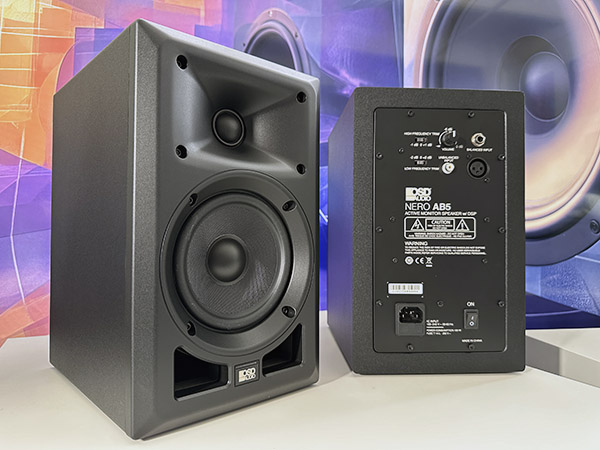
The AB6's cabinet reflects the overall cost and, as a result, is not built like a brick house. Its highs are not the most refined and definitely cannot be labeled as 'laid back." Still, I find this to be a highly revealing monitor for work or play. Its gentle, V-shaped signature is not at all obnoxious. It could use a little more 'oomph' at higher SPLs, my least criticism of this wonderful little monitor.
As an acid test, I was able to completely crank my AVR with the AB5 level pot also cranked and effectively out of the way. The DSP limiters on both the mains and the subs made this a non-issue. There was an edge to the sound, but I still sought more throw on the volume knob and the system, AVR/Mains/Subs, took it in stride without melting down. It was so easy to integrate a few basic components, source, AVR, mains, and subwoofers, to achieve such captivating sound. Running DRC in a well-treated room increased the accuracy and fun, and the OSD AB5 was kind enough to get on board with the improvements.
The AB5 has the widest soundstage I've heard from a small monitor, with the 7-foot equilateral triangle speaker/listening position extending about 2 feet. outside of the speaker boundaries, throwing up a huge stage! Within the confines of that triangle, it held most of my attention, giving us plenty of images placed within that space, and was my favorite attribute of the Nero AB5. It definitely benefits from bass augmentation; send a subwoofer or four my way next time, OSD!
Conclusion
The OSD Nero AB5 offers the highest value return for dollar vs. performance that I have ever experienced. Now, let us not get too excited here. The Nero AB5 is not a world-beater, just a solid performer in its category, dare I say at the top. It's not the best at anything other than being that, a tremendous value. It is a recording tool that happens to lend itself to recreational listening as well. It has a gentle V-shaped response, deviating slightly from the expected norm. Central vocals are called out in stark relief, and if a recording has sibilance in it, this will be accentuated. Solid bass response for its size and a cohesive blend between the tweeter and woofer.
I can think of several rooms within my home that the OSD Nero AB5 would be welcomed in. This is a serious loudspeaker and should be given due consideration.
Specs
Woofer: 5.25” inch Composite Fiberglass
Tweeter: 1” Ferrofluid Cooled Soft Dome
Freq Response: 50 Hz-20 kHz
Max SPL: 107 dB
Horizontal Coverage: 110°
Vertical Coverage: 70°
Input: Input signal (Impedance) 5 KΩ
Input connectors: XLR, Jack, RCA
Input sensitivity: +4/-2 dB
Amplifier Total Power: 100W
High frequencies: 25W
Low frequencies: 75W
Connection: VDE
Crossover frequency: 2000 Hz
Sensitivity control: -∞, - 6 dB, 0 dB
Limiter: Soft Limiter
Frequency Control: HF Adjust -1dB, 0dB, +1dB
LF Adjust: -2dB,0,+2dB
Sold As: Single
Dimensions (W x H x D): 7.28 x 11.8 x 9.57 in.
Weight: 9.25lbs
2 year warranty
- Log in or register to post comments















